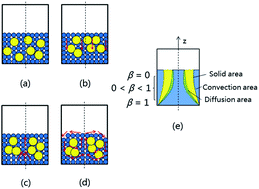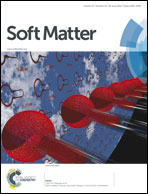Convecting particle diffusion in a binary particle system under vertical vibration
Abstract
We studied the separation behaviour of binary granular particles in a vertically vibrated container. The final separation of the binary particle system exhibited the Brazil-Nut (BN) effect, though it was not complete. Particle convection occurred, and four different typical convection modes were observed when the frequency f changed from 20 Hz to 80 Hz at constant dimensionless acceleration Γ = 4πAf2/g. However, when Γ changed from 2 to 4 at constant f, the system's convection mode stayed almost the same. In our experiments, one type of particle generally moved much faster than the other, so the former was termed the ‘convecting’ particle, and the latter was termed the ‘non-convecting’ particle. To study the separation results qualitatively, we divided the system into vertical layers and calculated the mass distribution of the binary particles along the z axis. The results showed that when f increased at constant Γ or Γ decreased at constant f, the convecting particles, usually the smaller and lighter ones, distributed less to the top side and more to the bottom side of the container. Finally, to explain the experimental results, we derived a mass conservation equation for the convecting particles considering simultaneous convection and diffusion. The equation described the experimental results well. We also analysed the effects of f, Γ, diameter ratio, density ratio, etc., on the final separation results.


 Please wait while we load your content...
Please wait while we load your content...